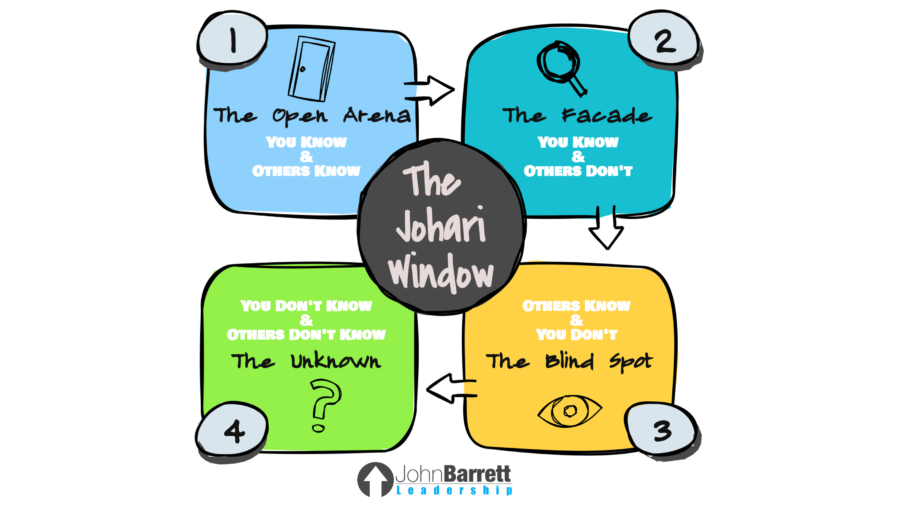The Johari Window
The Johari Window is a powerful tool for anyone looking to improve their self-awareness and leadership skills. Developed by psychologists Joseph Luft and Harrington Ingham, the Johari Window is a matrix that helps individuals understand their relationship with themselves and others. The matrix consists of four quadrants, each representing a different aspect of a person’s self-awareness.
The first quadrant is:
The Open Arena
This represents the things that you know about yourself and that others know about you. This is the area where your strengths and weaknesses are most apparent and where you should embrace your leadership style. By being aware of your strengths and weaknesses, you can better understand how to lead your team effectively. You can use your strengths to help your team succeed, and you can work on improving your weaknesses to become a better leader.
The second quadrant is:
The Facade
This represents the things that you know about yourself but others do not. This is where impostor syndrome can live and where you should strive to be more vulnerable to improve this area. As a leader, being open and honest with your team is essential. By sharing your vulnerabilities, you can build trust with your team and create a culture of transparency.
The third quadrant is:
The Blind Spot
This represents the things that others know about you but you do not know about yourself. This is where you should seek feedback from others to learn more about yourself and become more self-aware. As a leader, it is important to be open to feedback and to actively seek it out. By understanding how others perceive you, you can adjust your leadership style and become a more effective leader.
The fourth quadrant is:
The Unknown
This represents the things that you and others do not know about yourself. This is the area where your potential lies and where you should step out and seek new opportunities to discover what is inside of you. As a leader, taking risks and trying new things is essential. By stepping out of your comfort zone, you can discover new strengths and talents to help you become a better leader.
For Self:
To use the Johari Window in leadership development, start by taking an inventory of your strengths and weaknesses. Identify your Open Arena and embrace your leadership style. Then, work on improving your Facade by being more vulnerable with your team. Seek out feedback from others to overcome your Blind Spot, and step out of your comfort zone to explore the Unknown.
For Your Team:
As you develop your self-awareness and leadership skills, use the Johari Window to understand the strengths and weaknesses of your team. Encourage your team to be open and honest with one another and create a culture of transparency and feedback. By using the Johari Window in your leadership development, you can become a more effective leader and lead your team to success.










